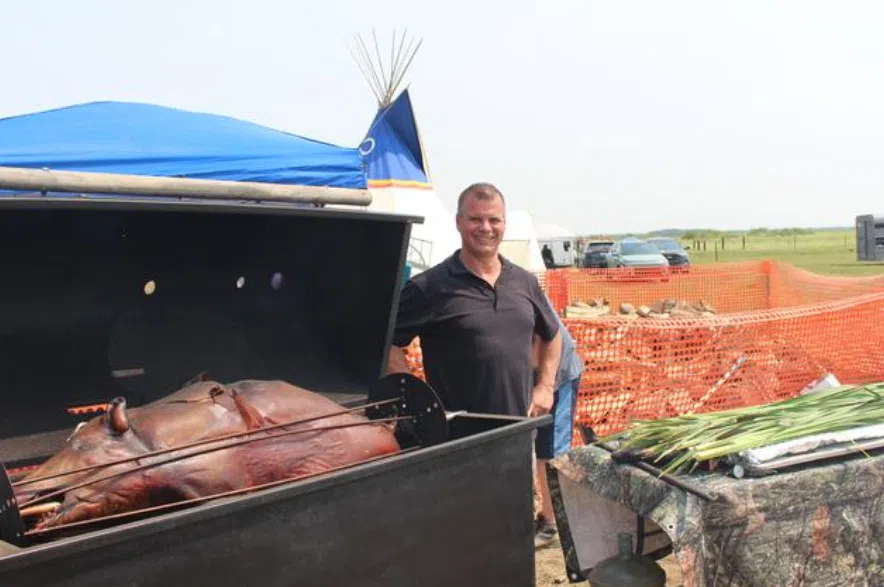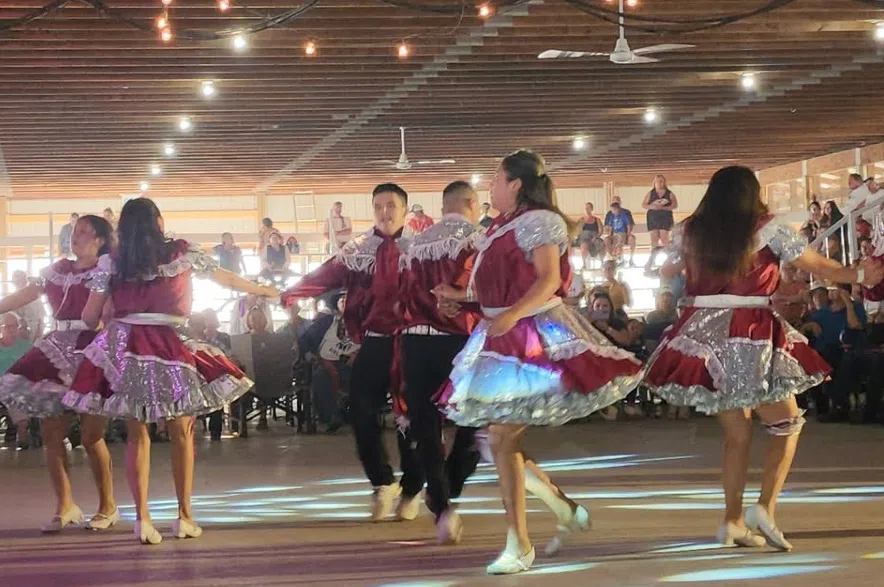Back to Batoche days are officially underway with lively campers and festival goers celebrating Métis culture and heritage.
In the last three years, the festival has grown from 20,000 visitors to over 40,000 and if the amount of food being cooked is any indication, they expect to see more growth in 2025.
Read more:
- Doukhobor Dugout House: Unearthing a Saskatchewan historical gem
- Métis Nation-Sask. sees Supreme Court ruling as monumental win
- ‘Blessed and thankful’: Batoche opens doors to Saskatchewan wildfire evacuees
As part of the largest Métis festival in the country, a large feast is cooked every day by members of the Métis Council of Saskatchewan’s Eastern Region 3.
For the last three years, those feasts have been run by Darcy Lepowick, who is director for Eastern Region 2A. Last year, he served around 600 people on opening night, and this year planned for between 800 to 1000.
“Last year, for example, I barbecued rabbit on Thursday, and then we cooked wild boar on Friday, and then we had a buffalo we cooked on a pitch — and that’s been in the last three years I’ve been involved.”

Darcy Lepowick has been helping with the feasts at Back to Batoche for the last four years. (paNow Staff/Nick Nielsen)
Lepowick first came to the national historic site between Prince Albert and Saskatoon four years ago with his wife as they were touring all the Métis festivals across the Prairies.
That first year, Lepowick helped butcher the buffalo. After meeting a bunch of interesting people, he decided to come back to help with the feasts and has even been brought supplies from his own game farm.
While cooking at the festival, Lepowick hasn’t had a chance to see all the exhibits and entertainment, but he has seen a noticeable shift in the culture over the years.
“Now that there’s more pride in being Métis, the image is portrayed a lot better for the Métis people and more people are coming out of the woodwork and showing pride in Métis culture learning about the history here as well.”
Lepowick is Métis but, like many others, he didn’t always know it.
“I was helping one of the neighbours… I was about 12 to 13 years old building a corral and he said ‘Do you know why I’m burning in the sun and you’re not?’, and I said ‘no’, and he says ‘Its because you’re an Indian, right?’. So I went home and asked my mom, and she said ‘No, we’re not…we’re Métis’, and then she explained a bit of history.”
Food an important part of festival
While Back to Batoche celebrates the Métis culture — one mixed with European and First Nations ancestry — the recipe Lepowick used for this year’s feast is one that doesn’t have any First Nations ties. It is a traditional recipe that stems from this area of Canada around the turn of the 20th century.
“It’s shishliki and it’s actually from our area. It’s a Doukhobor recipe that I copied.
“Originally the Doukhobors were a sort of religious group that originated in Russia that then moved to settle in our area, and traditionally it was lamb that they marinated. It’s a simple recipe and now we use it with chicken and wild boar, and wild boar actually tastes very similar to that when it’s marinated.”
This year Lepowick only cooked opening feast — a wild boar cooked on a spit from his own farm. One boar wasn’t going to feed the 1,000 people they expected , so they had to prepare some more before the start of the festival so that they would have enough.
“Last year, I cooked right through for about 42 hours, but this year we planned a little better. So, we pre-cooked about 150 lbs of meat and we froze it and we’re warming that up, and then also we’ve marinated the meat. It takes three days to marinate, so we started almost a week ago,” he said before the July 17 opening.
Back to Batoche runs until July 20.
The schedule is full with games, kids activities, dancing, music, artisans and vendors, chuckwagon races and more.
— By Nick Nielsen

The Métis are widely known for their square dancing which will be on display throughout Back to Batoche Days. (Back to Batoche/Facebook)
Read more:











